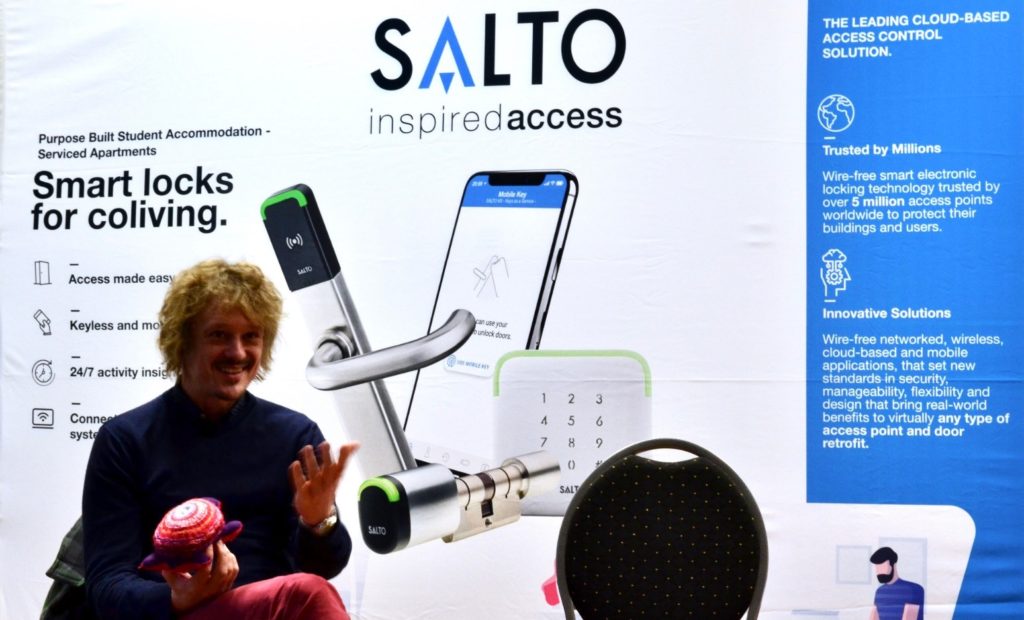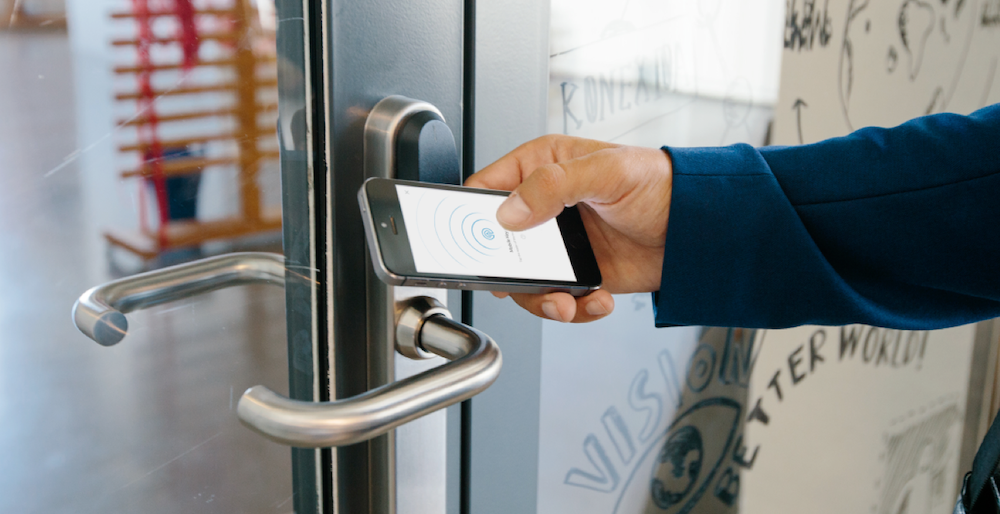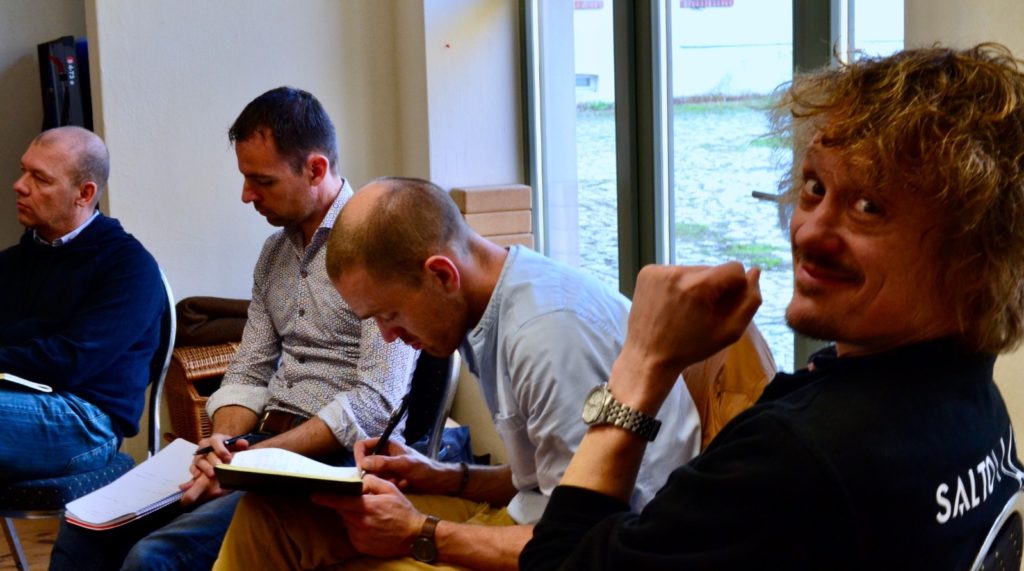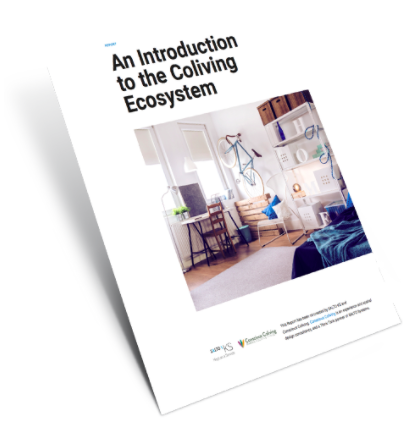Coliving Technology is becoming more and more one of the essential parts of a successful coliving strategy.
At Conscious Coliving, we know how true this is for coliving communities around the world.
This is why we have partnered with SALTO Systems.

We, SALTO & Conscious Colving, have a shared mission: to support human-centered coliving with resident wellbeing, authentic community and environmental sustainability at its heart. Having already collaborated on events such as meetups, workshops and talks, not to mention co-created content, Conscious Coliving and SALTO are happy to continue exploring the bright future of tech-enabled coliving.
In this article, Christian Schmitz, Global Account Manager for PBSA and Coliving at SALTO Systems shares his thoughts on access control, coliving, and the future of the sector, in an interview by Matt Lesniak, Head of Impact and Innovation at Conscious Coliving.
We have also collaborated on an exclusive thought leadership piece which we are releasing at the end of the article … enjoy the read and reach out if you have any thoughts about how best to integrate technology into shared living spaces!
An interview with Christian Schmitz
Matt Lesniak (ML): SALTO has been a supporter of many coliving initiatives and events, such as the conferences held by Coliving Hub and Co-Liv. We’d like to hear your observations on how you have seen the coliving ‘ecosystem’ develop, and what needs you are observing that coliving operators and developers have.
Christian Schmitz (CS): Coliving operators need to be mindful of the demands of their tenants, such as user-friendly spatial designs, convenience, and services of all kinds.However, there is also a need to closely monitor the supply and demands of both current and upcoming living markets. The recent pandemic transformed people’s homes into workplaces with the work-from-home policies, which shows how fast circumstances can change.

Due to the constantly evolving coliving ecosystem, operators have a need for a technologically advanced system that can evolve with the coliving site.
SALTO offers benefits going far beyond access control management. Convenient and easily implemented, our up-to-date technology provides future-proof hardware and software that can last the entirety of the property’s lifetime. SALTO Systems provides flexible solutions for the needs of today, as well as any kinds of future scenarios.
ML: What is the added value of a company like SALTO Systems for coliving operators?
CS: Choosing a smart access management system can be a daunting task for coliving operators, as there are many factors that need to be taken into account. For example, when one thinks about access control, there is a tendency to think only about the tenants of a coliving building. However, access control concerns so many others, such as maintenance staff and third-party service providers. When choosing an access control provider, operators need to consider all factors, such as scalability.
An important topic in this regard is ‘People Flow Management’, or the monitoring of people in places. It is highly important for coliving operators, and can be a complex process, depending on which services you use. Thus, it is vital to choose a management system that is flexible and easily implemented. For coliving operators, flexible access control in real-time, from everywhere, is essential. This is something SALTO Systems offers with their SALTO Keys as a Service (SALTO KS) cloud-based solution. Operators have complete control over access rules granted to each visitor, which means that they can easily manage the flow of people through their site, for example by granting access during specific timeframes or directing traffic in an efficient manner.
Furthermore, in today’s fast-paced world, it is important to future-proof your building and design it to be flexible for various purposes. The life cycle of a building usually far exceeds technological trends, which is why flexibility is essential. Coliving operators frequently encounter challenges regarding the differences between hardware components across countries, which interact with a unified backend, Access Control Platform, Property Management Systems (PMS), or others. Doors differ between sites and countries and the form factors vary.
In this regard, operators need to work with suppliers who can provide a portfolio for global coverage. This is in contrast with choosing individual suppliers, which means they have to start over and implement everything to the backend each time. At SALTO, we pride ourselves on our global presence. We provide support in any country and locks that can be installed on any door, which are all based on the same backend and management portal. This provides a seamless user experience across countries, while keeping the same sleek SALTO design.
ML: How can Coliving developers and operators enhance their experience and operations by integrating technologies such as SALTO Systems?
CS: The SALTO smart technology and integrations allow coliving operators to automate many operational tasks, freeing up time for other initiatives. Using smart access control can mean automatising the check-in and check-out processes by granting access to new guests or tenants before the start of their stay, and blocking the access when the stay has ended.

This eliminates the need for reception or welcoming services, allowing more time to focus on enhancing customer experience.
Automating certain tasks is also a valuable option during unexpected circumstances, such as the COVID-19 pandemic. The SALTO KS cloud-based solution has allowed operators to quickly respond to physical restrictions measures and limit unnecessary human interactions. Additionally, SALTO offers operators the flexibility of providing either Mobile Key or physical credential types, depending on which suits its tenants better.
Furthermore, combining their existing PMS with the SALTO access control platform enables operators to make use of AI by creating ‘IF THIS THEN THAT (IFTTT)’ logic. The first impression people get of their new coliving space is a significant one, and it is an important moment for operators to connect with their guests. By using IFTTT logic, operators can leave a personal note for first-time visitors or offer drinks or food services for people checking in late at night. Customising lights and music to fit user interests and being creative can create an unforgettable user experience.
Finally, SALTO technology can be used beyond access control. Our cloud-based technology can be developed towards other applications, such as sustainability. For example, SALTO Systems could help operators save energy by turning off the lights or heat when no one is in the building.
ML: How do the needs of coliving operators differ from some of your other customers (i.e. hotels, PBSA, schools, retail)? How do the needs of coliving users differ from other users?
CS: As reflected by their name, community is a key focus for the coliving and coworking industries. Verticals like coworking and coliving also tend to be more tech-oriented than other verticals, and they often rely on partnerships with tech platforms to build an effective and strong facility. As innovative industries themselves, they are very open to new concepts.
Coliving tenants look not only for a trendy space to live temporarily, but a place to call home. However, perhaps due to the high ratio of Millennial and Gen-Z inhabitants and operators, there is also a demand for high-quality service and advanced technology. There, SALTO can be of assistance. SALTO aims to be not only a product or a solution supplier for coliving spaces, but rather be a part of providing the full experience to coliving tenants. This is only possible alongside partners such as Conscious Coliving.
ML: Do you think there are any lessons that can be taken from your other customer types that can be applied to coliving (and vice versa)?
CS: Coliving designs tend to be very user-centric while staying true to their original business concept. For new coliving spaces, a focus on user experience design, as well as spatial design, is essential. Other, more established businesses can benefit from the coliving and coworking verticals, by rethinking their concepts towards enhancing their users’ experience.

For coliving, however, it can take advantage of the more mature markets and adapt scaling. This means implementing operational processes and working with reliable partners who can take care of the global roll out procedure, based on defined standards.
ML: How do you anticipate that the services SALTO offers might change to incorporate living with the coronavirus? How do you anticipate coliving services to change during and after the coronavirus?
CS: I anticipate that the coliving trend will only accelerate in the aftermath of the coronavirus, and we will see more services and integrations focused on making that happen. AI and smart access control allows flexibility to the coliving spaces, while allowing ad hoc measures to be seamlessly enabled.
If we take a common space like a laundry room as an example, an access control system can monitor the number of people in the room at any given time. If the room gets too crowded, the system can restrict access to the room until other members finish their laundry. The system might even inform the tenants how many members are in the room in real-time, so people can avoid the room when it’s crowded (i.e. People Flow Management).
ML: How do you see the Coliving sector evolving from where it is now? What will Coliving 2.0 or 3.0 look like?
CS: I think the coliving sector will become increasingly interconnected. I see other verticals, such as the hospitality industry, rethinking their business practices and even offering “coliving hybrid models”. A well-known example of this is The Student Hotel. They combined student accommodation, hotel rooms, and coworking in an inspiring hospitality concept. Additionally, larger hotel chains are rethinking their business concepts and are increasingly using their real estate for coliving.
Coliving is a trending phenomenon. Unfortunately, that means that some hospitality operators market their establishments as a coliving space despite not containing any features characterized by coliving. This can prove to be a challenge for the coliving industry. However, if established coliving spaces stay focused on the core values of community and valuable social interactions, this can help differentiate them from fake coliving providers.
Thus, I think Coliving 3.0 will be a time for establishing the industry as an empowered real estate class, with the core values at the centre of the movement.
An Introduction to the Coliving Ecosystem
We want to give a big thanks Christian for sharing his valuable insights!
To celebrate the partnership between Conscious Coliving and SALTO Systems, we are pleased to announce the imminent release of our newest publication:
The Coliving Ecosystem Report.
This co-created paper defines and discusses how coliving works from an investor perspective, ownership/operations perspective and user perspective, offering a birds eye view of coliving for those who are new to the sector.
You can download the paper below and please feel free to reach out if you have any questions or would like to collaborate on similar content or partnerships in the future!
Also, you can explore the topics of coliving technology and coliving apps in general, including coliving security technology, in the Coliving Apps, Software & Tech Guide.
This article has been coauthored for you by:
Matt is responsible for designing community experience and impact strategies and measuring the social value of coliving communities. Matt is also a founding member and current Head of Community of Co-Liv and has worked for The Collective on their Impact Team.
Juan is a Communications Strategist, Project Manager, Systems Engineer, Team Coach and Executive Coach with an ontological/systemic approach. Co-author of the Coliving Apps, Software & Tech Guide and contributor of The Community Facilitation Handbook. He facilitates connection for individuals, teams, and communities.
